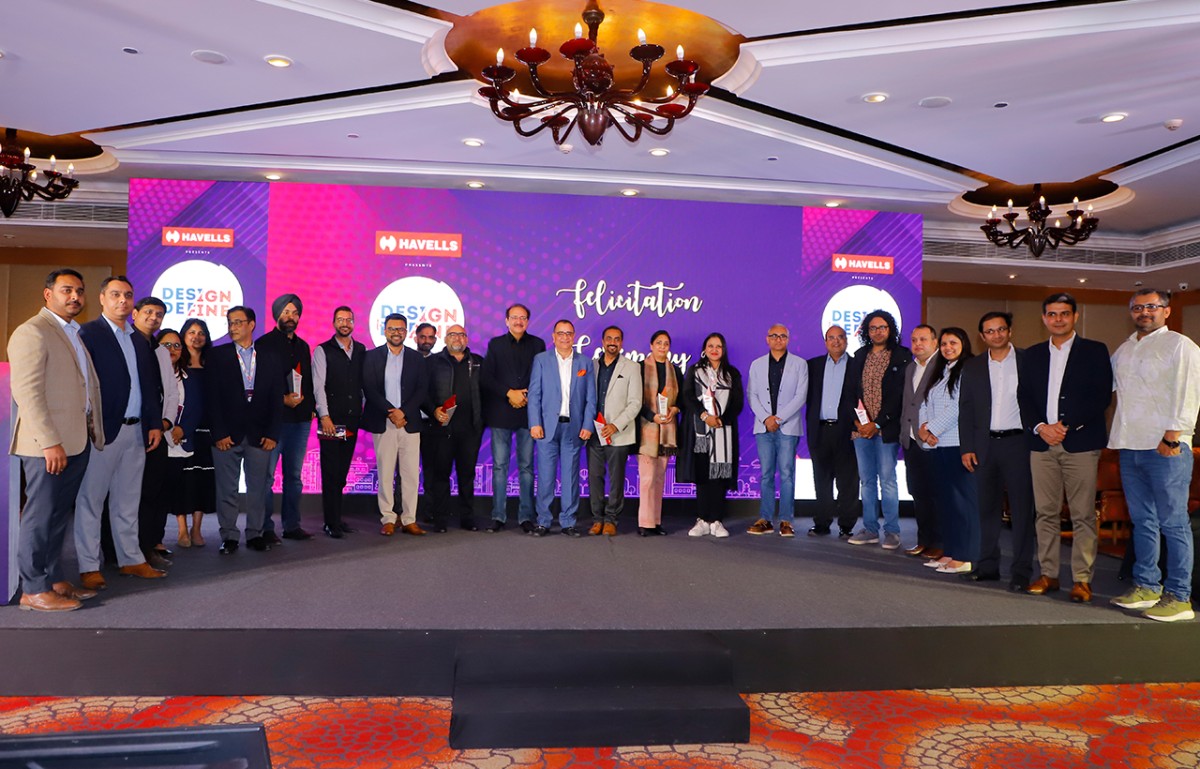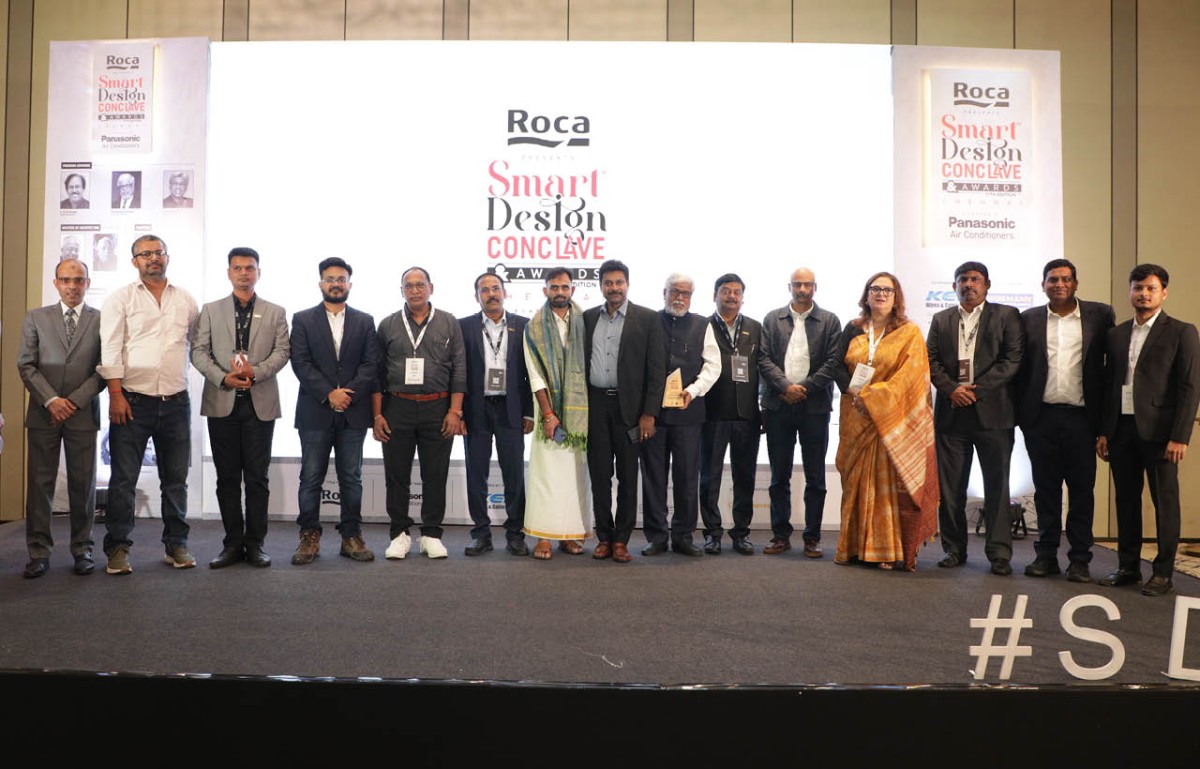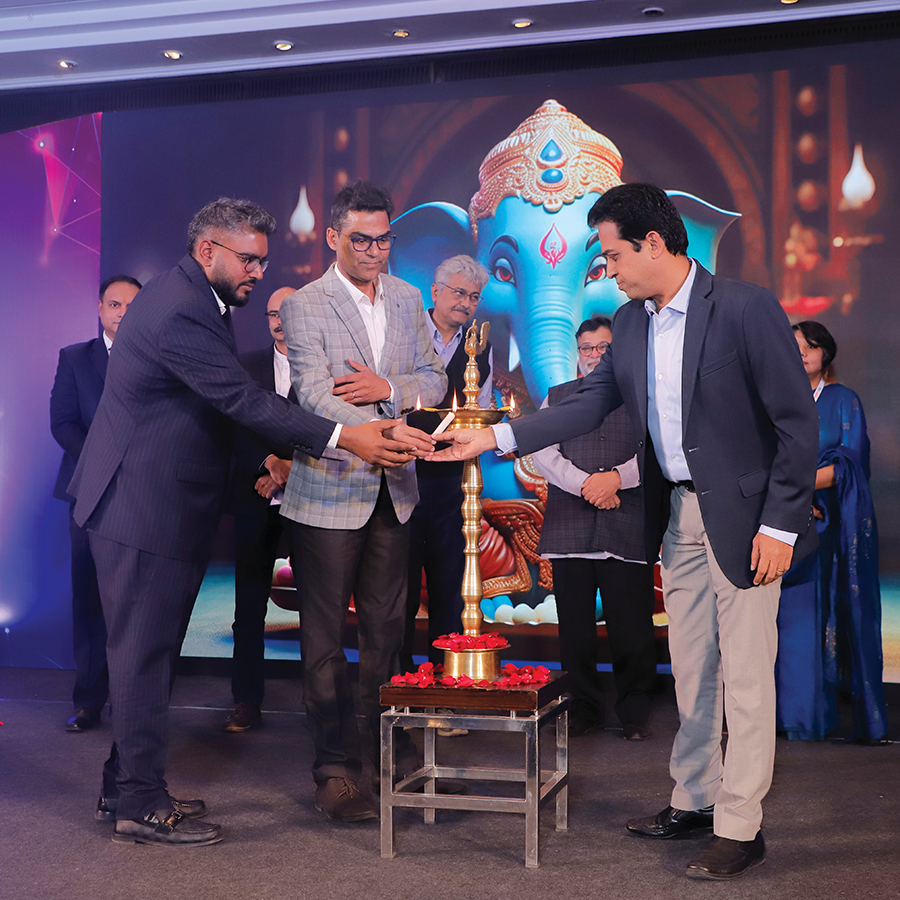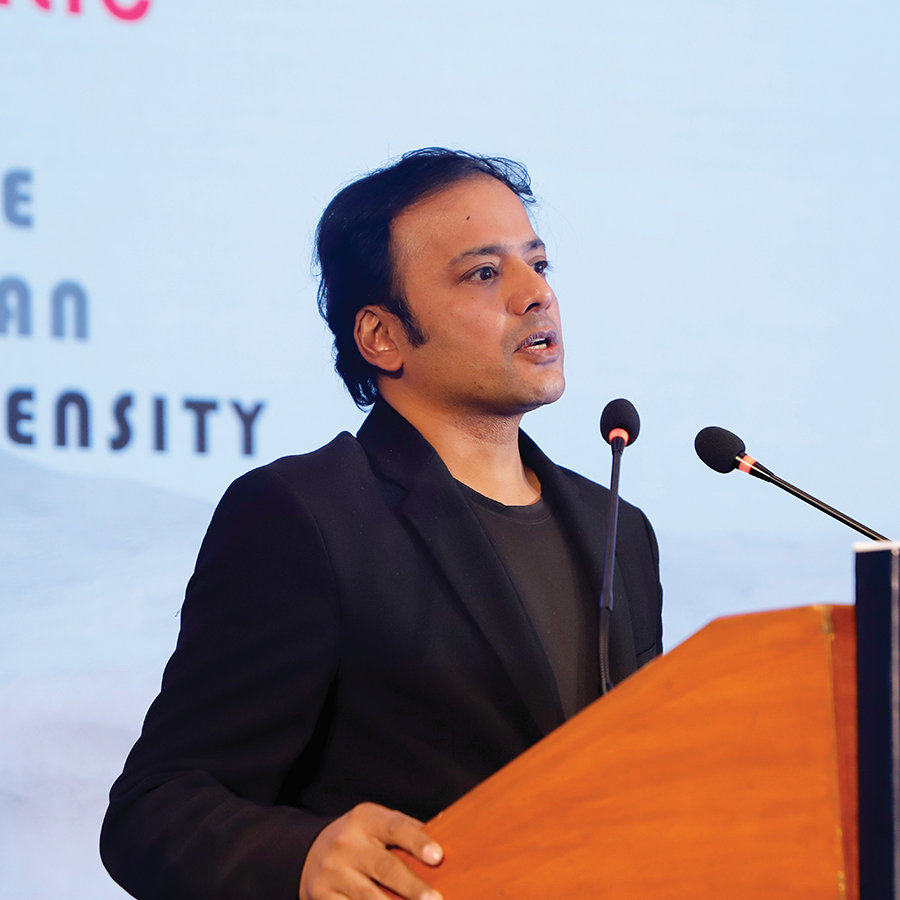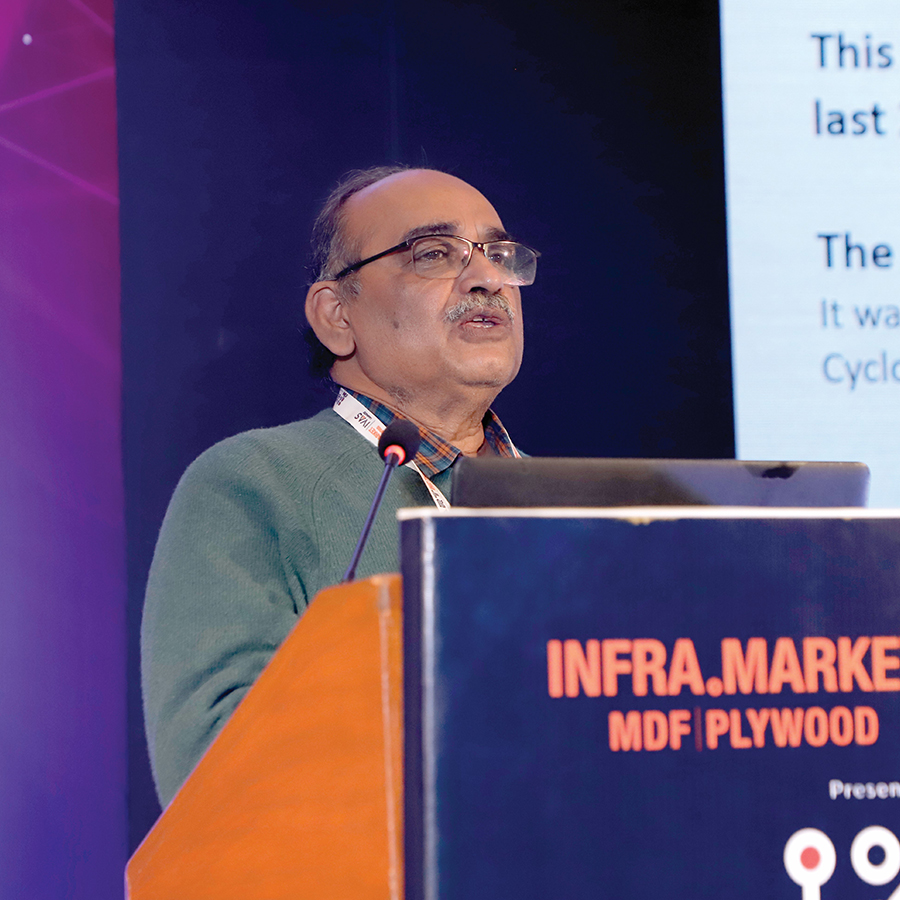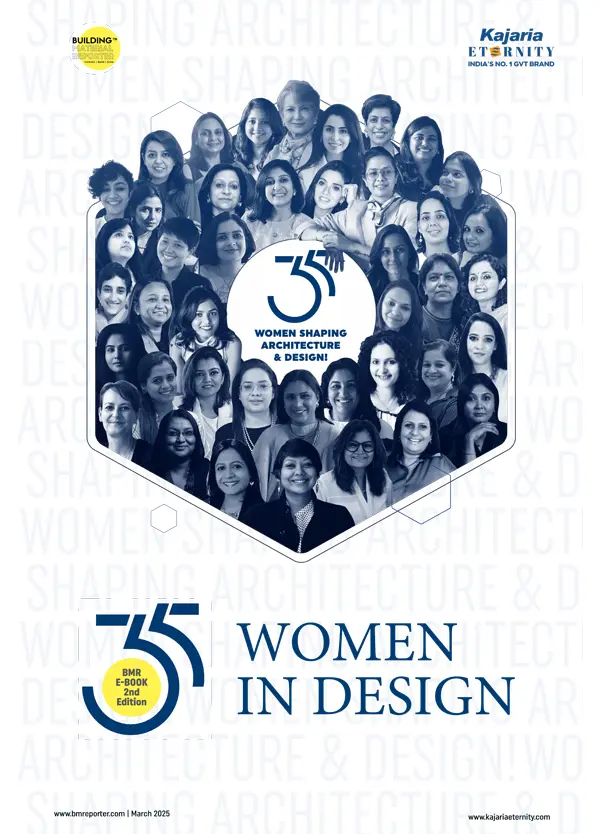Vaishali M of SJK Architects Redefines Luxury Through Space & Nature
- October 30, 2025
- By: Syed Md. Ehteshamul Hasan
- NEWS
 Ar. Vaishali Mangalvedhekar of SJK Architects redefines luxury in architecture, moving beyond opulence to embrace space, minimalism, and a deep connection with nature. At Smartex 2025, she shared how the evolving perceptions of luxury are shaping the future of design. Excerpts: Syed Md Ehteshamul Hasan
Ar. Vaishali Mangalvedhekar of SJK Architects redefines luxury in architecture, moving beyond opulence to embrace space, minimalism, and a deep connection with nature. At Smartex 2025, she shared how the evolving perceptions of luxury are shaping the future of design. Excerpts: Syed Md Ehteshamul Hasan
Luxury in architecture has traditionally been synonymous with opulence, grandeur, and the display of wealth. However, as societal values shift, so does the definition of luxury. For Ar. Vaishali Mangalvedhekar of Mumbai-based SJK Architects, the new luxury is about creating meaningful experiences, fostering connections with nature, and designing spaces that resonate with the soul. During her presentation at Smartex 2025, Mangalvedhekar explored how architecture is adapting to this evolving concept of luxury, emphasizing space, minimalism, and authenticity.
The Shift in Perception: From Opulence to Experience
Mangalvedhekar began by highlighting the changing perceptions of luxury, particularly among younger generations. A 2018 study revealed that only 6% of Gen Y and Gen Z luxury consumers purchase products as a direct expression of wealth. Instead, 85% believe that the values their clothes represent are more important than their quality or design. This shift reflects a broader trend where luxury is no longer about owning symbols of wealth but about experiencing intangibles that elevate everyday life.
In architecture, this translates to designing spaces that evoke emotions, foster well-being, and connect individuals with their surroundings. Mangalvedhekar emphasised that while traditional notions of luxury still exist, a powerful new alternative is emerging—one that prioritises authenticity, sustainability, and human-centric design.
Luxury as Space: Beyond the Matchbox Existence
One of the key ideas Mangalvedhekar explored was the concept of space as a luxury. In densely populated cities, where living spaces are often cramped and confined, the ability to create a sense of openness and awe is a true indulgence. She drew a parallel to the experience of flying business class, where the extra space itself is a luxury.
To illustrate this, Mangalvedhekar shared the example of a luxury resort her firm designed in Bodhgaya, a holy pilgrimage site for Buddhists. The hotel’s design is rooted in two architectural ‘lyrics’: memory and emotion. Drawing inspiration from Buddhist structures, the team incorporated arches, domes, and bowls into the design, reinterpreting them in a contemporary idiom. The central courtyard, the emotional heart of the hotel, enhances the perception of space by extending the indoors to the outdoors.
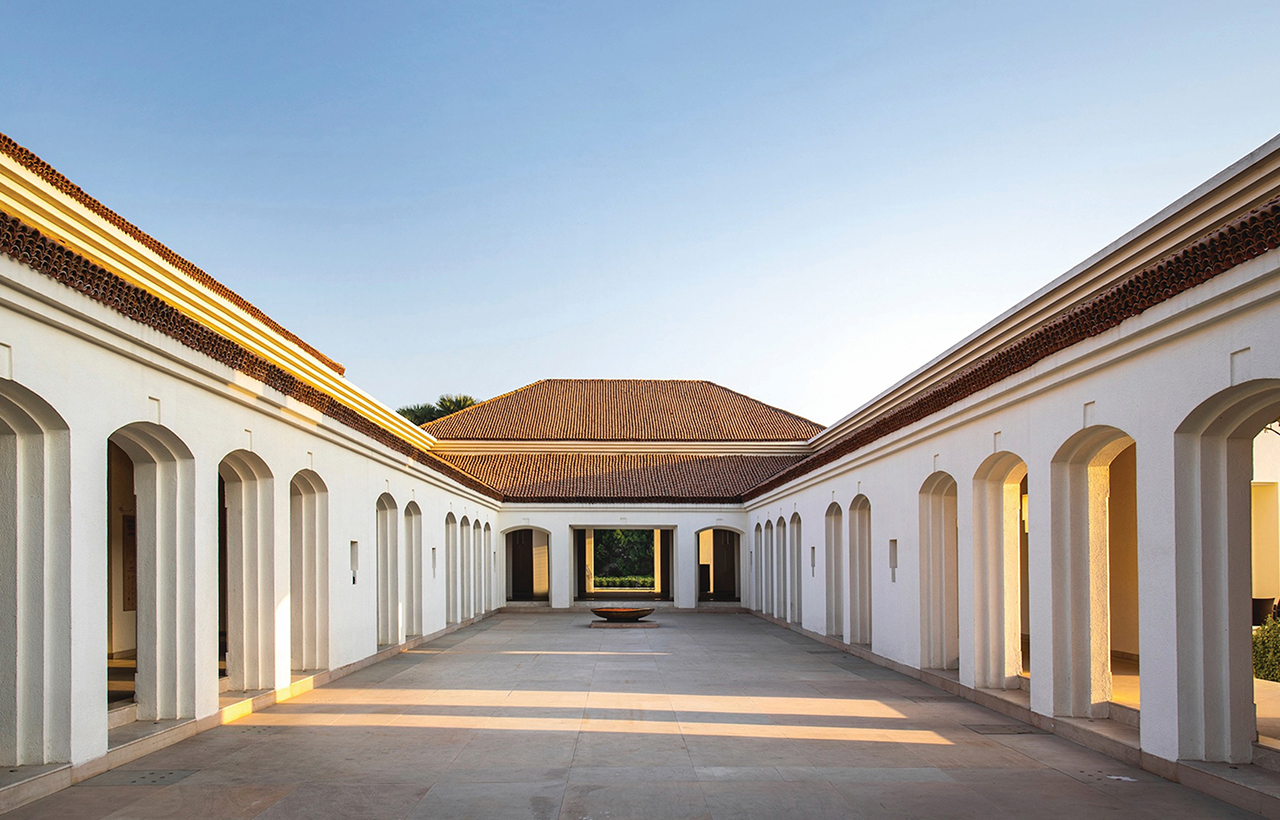 Despite using humble materials like white plaster walls and ceramic tiles, the resort exudes luxury through its proportions, volumes, and play of light. Mangalvedhekar explained that luxury in this context is not about extravagance but about creating beautiful, meaningful spaces that resonate with the soul.
Despite using humble materials like white plaster walls and ceramic tiles, the resort exudes luxury through its proportions, volumes, and play of light. Mangalvedhekar explained that luxury in this context is not about extravagance but about creating beautiful, meaningful spaces that resonate with the soul.
Minimalism as Luxury: The Calm Amidst Clutter
In a world filled with clutter and chaos, minimalism has emerged as a new form of luxury. Mangalvedhekar described how clean lines, soothing material palettes, and purposeful detailing can create spaces that evoke calm and tranquility. She showcased the Boat Club Apartments in Chennai as an example of this philosophy.
Designed for expats, the five-story building features a central courtyard that brings in light and fosters neighbourly interactions. The apartments are designed as ‘villas in the sky’, with a play of volumes that creates a sense of spaciousness. The facade, with its large overhangs and deep balconies, reflects the intense heat of Chennai, while the material palette remains deliberately simple—white stone, grey granite, and brown timber.
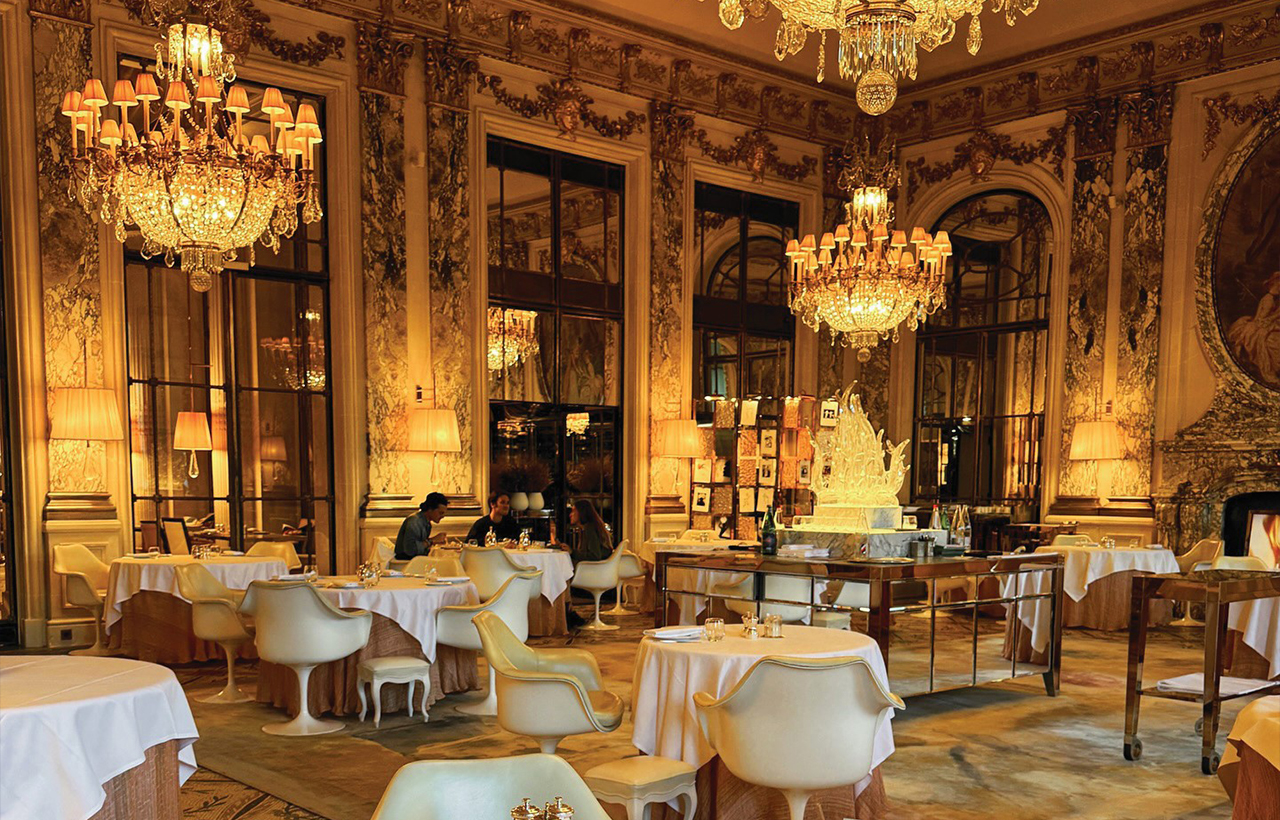 Mangalvedhekar emphasised that minimalism does not equate to boredom. By using materials in innovative ways, such as floating stone in the atrium or creating textured patterns with sunlight, the design achieves a sense of sophistication and luxury. The result is a space that feels calm, refined, and deeply connected to its context.
Mangalvedhekar emphasised that minimalism does not equate to boredom. By using materials in innovative ways, such as floating stone in the atrium or creating textured patterns with sunlight, the design achieves a sense of sophistication and luxury. The result is a space that feels calm, refined, and deeply connected to its context.
Luxury of Connection: Blurring the Lines Between Inside & Outside
For Mangalvedhekar, one of the most profound forms of luxury is the ability to connect with nature. She shared the story of a weekend home her firm designed in Alibaug, a serene coastal town near Mumbai. The site, filled with existing trees, inspired a design that blends seamlessly with its natural surroundings.
The house is broken into small clusters that sit among the trees, with a roof form inspired by the shape of a leaf. This whimsical yet practical design not only pays homage to the region’s vernacular architecture but also responds to the local climate. The leaf-like roof soars high to invite daylight and dips low to protect against rain, creating comfortable living spaces that blur the boundaries between indoors and outdoors.
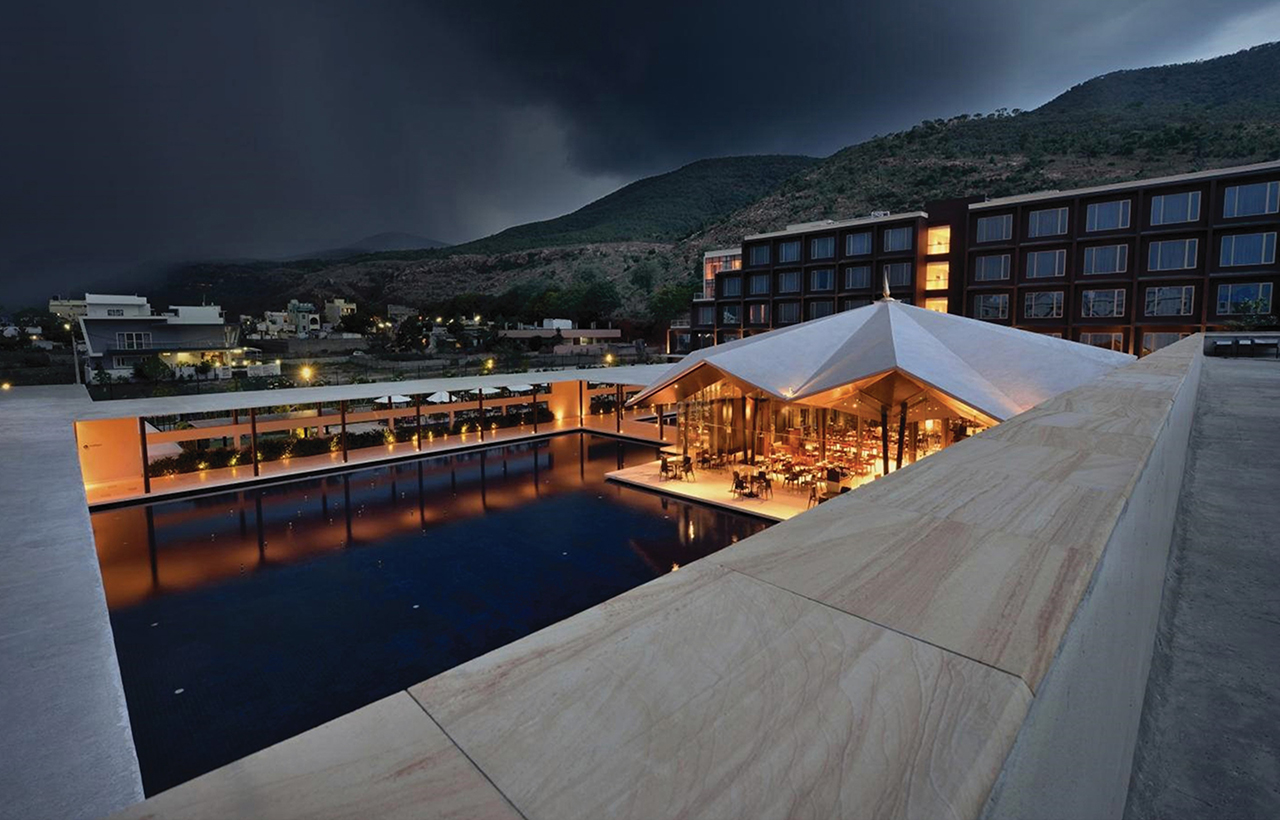 The material palette is deliberately simple and natural, with kota stone floors, raw steel columns, and recycled wood. Mangalvedhekar explained that luxury in this context is not about expensive materials but about creating an authentic connection with nature. The design celebrates the raw and natural, offering a respite from the highly processed and synthetic environments that dominate modern life.
The material palette is deliberately simple and natural, with kota stone floors, raw steel columns, and recycled wood. Mangalvedhekar explained that luxury in this context is not about expensive materials but about creating an authentic connection with nature. The design celebrates the raw and natural, offering a respite from the highly processed and synthetic environments that dominate modern life.
Personalisation as Luxury: Tailoring Spaces to Individual Needs
Another aspect of the new luxury is the ability to personalise spaces. Mangalvedhekar highlighted a family home in Nagpur, where the challenge was to create a sense of spaciousness in a tight urban plot. The solution was to incorporate balconies with timber lattice screens, inspired by traditional jharokas.
These screens serve multiple purposes: they provide privacy, filter harsh sunlight, and facilitate ventilation, reducing the need for air conditioning. The lattices can be opened or closed, allowing residents to customise their spaces based on their preferences for light, privacy, and airflow. This flexibility transforms the balconies into versatile spaces that enhance the living experience.
Mangalvedhekar emphasised that luxury today is about offering variety and personalisation, even within constrained environments. By leveraging technology and traditional design principles, architects can create spaces that adapt to the unique needs and preferences of their occupants.
Luxury with Personality: Telling Stories Through Design
Finally, Mangalvedhekar explored the idea of luxury as a reflection of local identity and culture. She shared the example of a hotel her firm designed in Tirupati, a pilgrimage site for Hindus. The design draws inspiration from the temple of Lord Balaji, incorporating cultural symbols and traditional elements into a contemporary context.
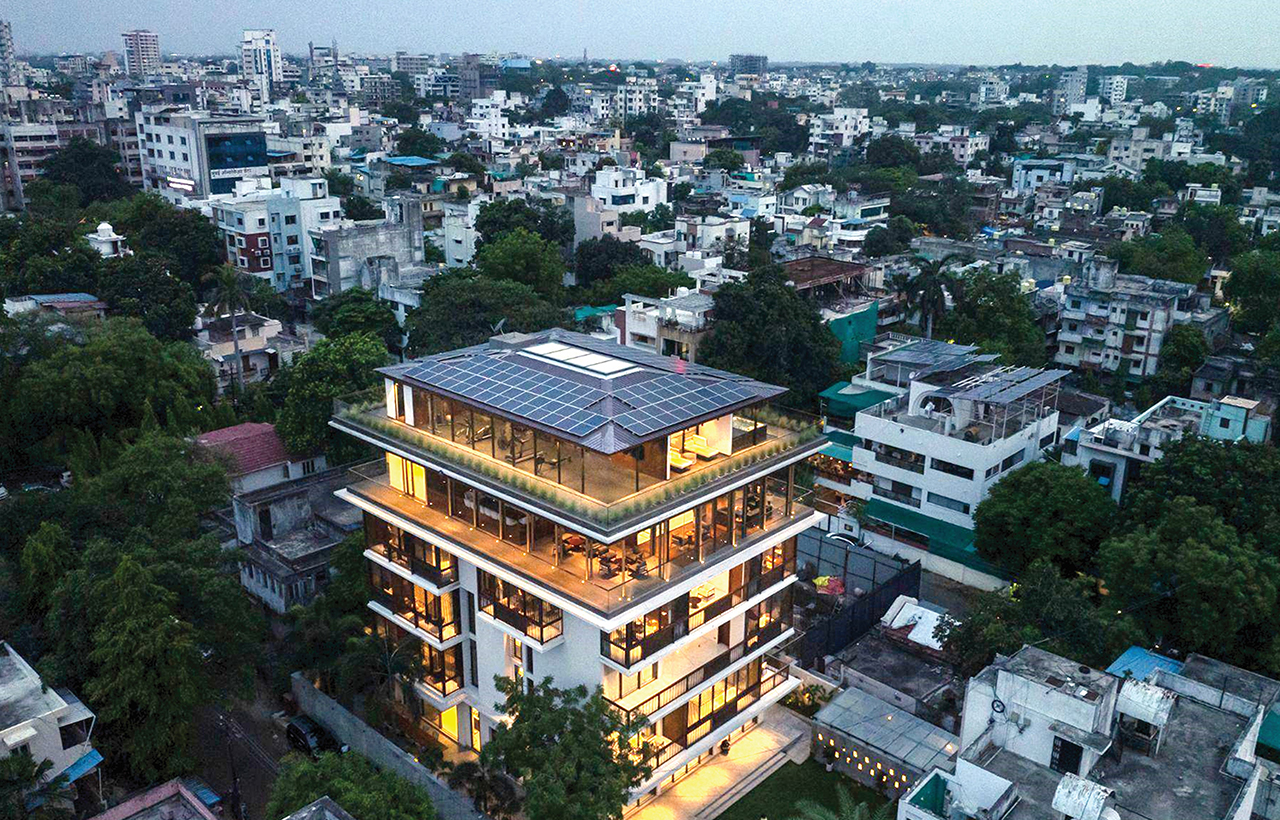 The hotel features a central water body inspired by temple tanks, with an all-day dining area shaped like a lotus—a symbol associated with Lord Vishnu. The guest blocks are clad in black, referencing the black idol of Lord Balaji, while the interiors are themed around the ten avatars of Sri Krishna. Mangalvedhekar explained that luxury in this context is about creating a unique, immersive experience that connects guests to the cultural and spiritual essence of the place.
The hotel features a central water body inspired by temple tanks, with an all-day dining area shaped like a lotus—a symbol associated with Lord Vishnu. The guest blocks are clad in black, referencing the black idol of Lord Balaji, while the interiors are themed around the ten avatars of Sri Krishna. Mangalvedhekar explained that luxury in this context is about creating a unique, immersive experience that connects guests to the cultural and spiritual essence of the place.
The Future of Luxury in Architecture
Ar. Vaishali Mangalvedhekar’s work exemplifies the evolving definition of luxury in architecture. By prioritising space, minimalism, nature, personalisation, and cultural authenticity, she demonstrates that luxury is no longer about opulence but about creating meaningful, human-centric experiences. As the world continues to change, the role of architects is to design spaces that resonate with the values and aspirations of their occupants. Whether it’s a serene weekend home, a minimalist apartment, or a culturally rich hotel, the new luxury is about crafting spaces that inspire, uplift, and connect. In Mangalvedhekar’s words, "Luxury is not about what you own; it’s about how you feel. And as architects, our job is to create spaces that make you feel extraordinary."


